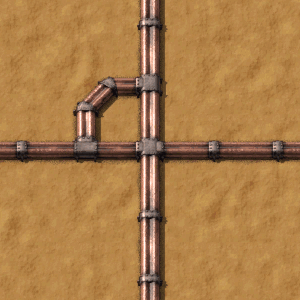Heat pipe: Difference between revisions
Jump to navigation
Jump to search
m Category overhaul |
mNo edit summary |
||
| Line 4: | Line 4: | ||
The '''heat pipe''' can transport heat over longer distances and connect devices which produce and use heat. Currently this is limited to [[heat exchanger]]s and [[nuclear reactor]]s. | The '''heat pipe''' can transport heat over longer distances and connect devices which produce and use heat. Currently this is limited to [[heat exchanger]]s and [[nuclear reactor]]s. | ||
Heat pipes have a heat capacity of 1 MJ/ | Heat pipes have a heat capacity of 1 MJ/°C. Thus, they can theoretically buffer 500 MJ of heat energy across their working range of 500°C to 1000°C, making them a space-efficient energy store. However, because temperature needs a drop of greater than 1 degree before it will "flow," you can't raise them all the way to 1000°C or drain them all the way to 500°C, so the practical energy capacity will depend on the layout. | ||
== History == | == History == | ||
Revision as of 20:21, 17 December 2018
| Heat pipe |
- Base game
- Space Age mod
The heat pipe can transport heat over longer distances and connect devices which produce and use heat. Currently this is limited to heat exchangers and nuclear reactors.
Heat pipes have a heat capacity of 1 MJ/°C. Thus, they can theoretically buffer 500 MJ of heat energy across their working range of 500°C to 1000°C, making them a space-efficient energy store. However, because temperature needs a drop of greater than 1 degree before it will "flow," you can't raise them all the way to 1000°C or drain them all the way to 500°C, so the practical energy capacity will depend on the layout.
History
- 0.15.11:
- Changed heat transfer mechanics, prior to this heat would flow better following the order of heat pipe placement
- 0.15.0:
- Introduced
See also
